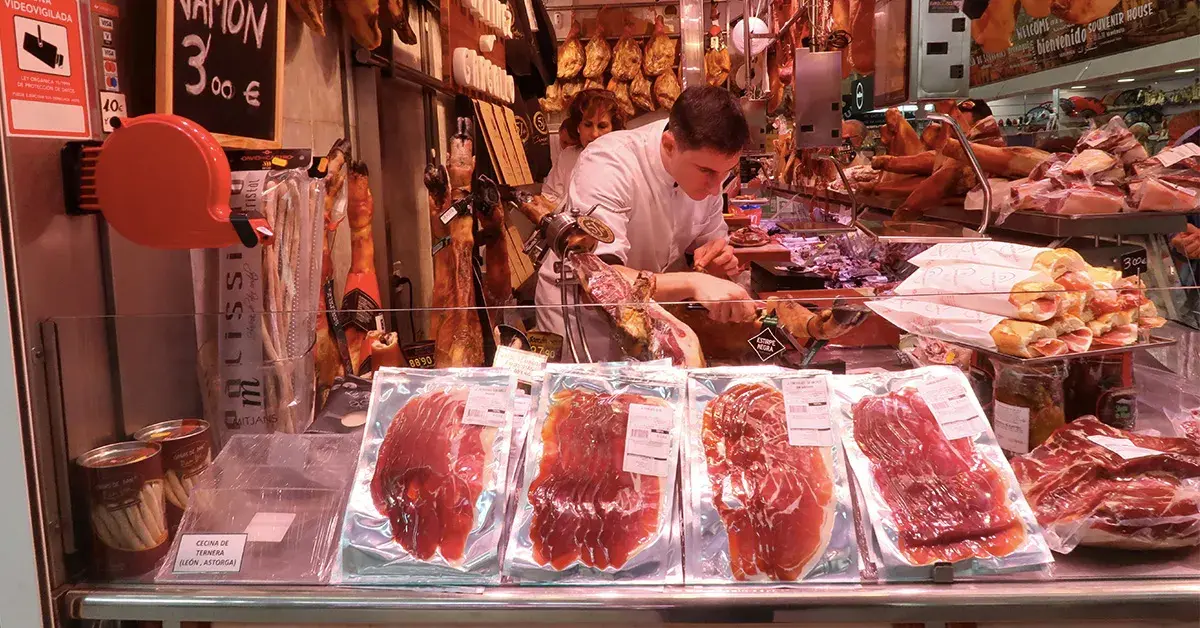Why Locals Love Bagley Farms Meat Market Edwardsville IL for Their Meat Buying
Why Locals Love Bagley Farms Meat Market Edwardsville IL for Their Meat Buying
Blog Article
Uncover the Art of the Butcher's Cut in a Modern Meat Market
In the ever-evolving landscape of modern-day meat markets, the butcher's cut has transcended its traditional origins, merging age-old craftsmanship with contemporary practices. What absolutely establishes the modern-day butcher apart is their capability to build a much deeper link in between consumers and the origins of their meat.
Evolution of Butchery Techniques
The evolution of butchery techniques reflects an abundant tapestry of innovation and adaptation driven by developments in technology, modifications in consumer need, and a deeper understanding of meat scientific research. Historically, butchery was a craft passed down with generations, with approaches sharpened over centuries to maximize return and flavor. The industrial revolution ushered in mechanization, transforming conventional practices and making it possible for massive handling.
The mid-20th century saw butchery techniques further improved by clinical insights right into muscle biology and meat aging, enhancing both tenderness and taste. Developments like vacuum packaging and refrigeration prolonged item shelf-life, permitting butchers to branch out offerings and boost quality assurance. This period likewise marked the surge of customized devices, such as band saws and meat slicers, which enhanced accuracy and performance in meat processing.

The 21st century has actually presented electronic modern technology into the butchery realm. Digital systems currently help in tracking pet provenance and maximizing cuts to meet particular client preferences. In addition, a resurgence in artisanal butchery has arised, blending standard skills with modern expertise to accommodate consumers seeking moral and sustainable meat alternatives. This development highlights a vibrant interaction between practice and technology, conference contemporary demands while protecting the craft's heritage.
Understanding Meat Cuts
Understanding the complexities of meat cuts is vital for both butchers and customers looking for quality and worth. Each cut originates from a different part of the pet, giving special flavors, appearances, and food preparation approaches - bagley farms meat market edwardsville il. Mastery of these distinctions not only improves cooking experiences but likewise makes the most of the utility of each carcass. For butchers, accurate cuts mirror skill and respect for the craft, making certain minimal waste and ideal return.

Understanding muscle mass structure is important; muscle mass used extra often by the animal have a tendency to be harder and are best suited for slow-moving cooking approaches, while less-used muscles, like those discovered in the loin, are more tender and perfect for grilling or roasting. Experience with these distinctions equips customers to make informed selections, enhancing their culinary endeavors.
Selecting High Quality Meat
Selecting the right meat entails more than simply selecting an aesthetically enticing item from the display. The art of choosing top quality meat needs a discerning eye and expertise of particular qualities that indicate quality and quality.
Secondly, consider the marbling, which refers to the white streaks of fat within the muscular tissue. Appropriate marbling is a crucial indicator of inflammation and taste, as it melts throughout cooking, improving the meat's juiciness. Remember, greater marbling usually associates with exceptional top quality cuts, such as USDA Prime.
Appearance is another crucial aspect; meat must really feel solid to the touch, not slimed or extremely soft. Furthermore, bear in mind the fragrance. Fresh meat needs to have a clean, neutral odor, without any kind of sour or off-putting smells.
Combining Cuts With Food Preparation Techniques

Conversely, tougher cuts like brisket and chuck roast are rich in collagen, which damages down right into gelatin when prepared slowly. These cuts are perfect for braising or slow roasting, permitting the meat to tenderize in time and develop deep, intricate flavors. Cuts such as short ribs and pork shoulder fare well with slow-cooking approaches, where prolonged cooking times change their durable textures into delicious meals.
Lamb shanks and oxtail, which need extended cooking to tenderize, are excellent candidates for stewing or sluggish simmering. These methods coax out rich, passionate tastes while preserving dampness. By comprehending the unique features of each cut, chefs and home chefs alike can raise their cooking developments, making sure each recipe is both satisfying and memorable.
The Butcher's Duty Today
Navigating the advancing landscape of the contemporary meat market, the butcher's duty today prolongs past mere preparation of cuts. Contemporary butchers are culinary artisans, educators, and supporters for lasting methods. They link the gap between the ranch and the fork by making certain ethical sourcing, recognizing pet husbandry, and focusing on transparency in the supply chain. This change reflects the growing customer need for quality over quantity, where provenance and pet welfare are paramount.
In enhancement to crafting specific cuts, butchers now involve straight with clients, using cooking suggestions and tailoring choices to suit specific needs and preferences. Their experience in meat aging, marbling, and flavor accounts encourages customers to make enlightened decisions, improving their culinary experiences. This customized solution exemplifies the butcher's progressing role as a relied on expert in Get More Information the kitchen area.
Furthermore, butchers are pivotal in lessening waste, utilizing entire pets to produce varied products such as sausages and supplies. This extensive technique not just respects the animal but additionally lines up with contemporary sustainability goals. This way, the modern-day butcher symbolizes both tradition and development, adapting to an ever-changing market while maintaining the virtuosity and honesty of their craft.
Verdict
Mastery in understanding diverse meat cuts and quality signs empowers butchers to supply informed suggestions, lining up reference particular cuts with ideal food preparation approaches. By honoring historic techniques while accepting contemporary needs, the butcher's duty continues to be important in today's advanced meat market.
Report this page